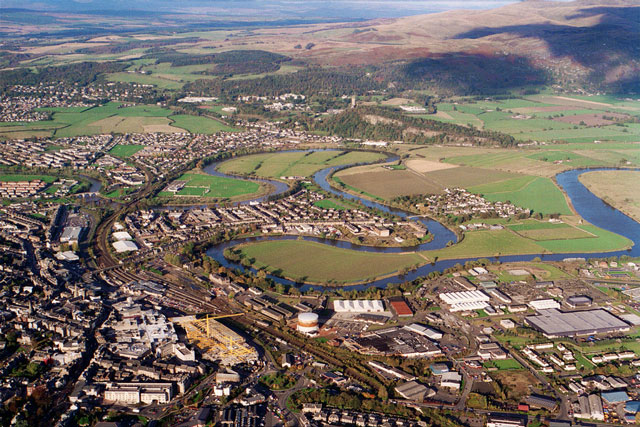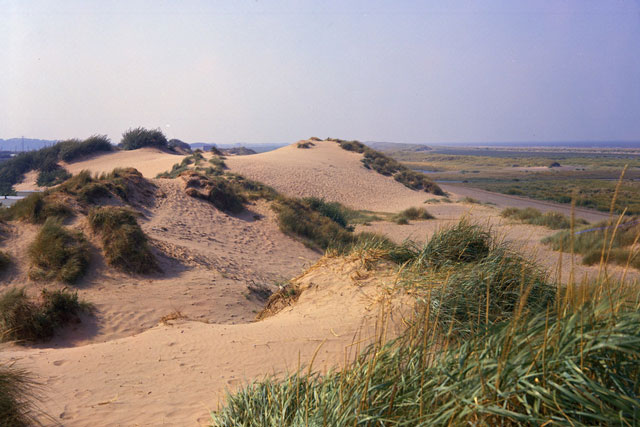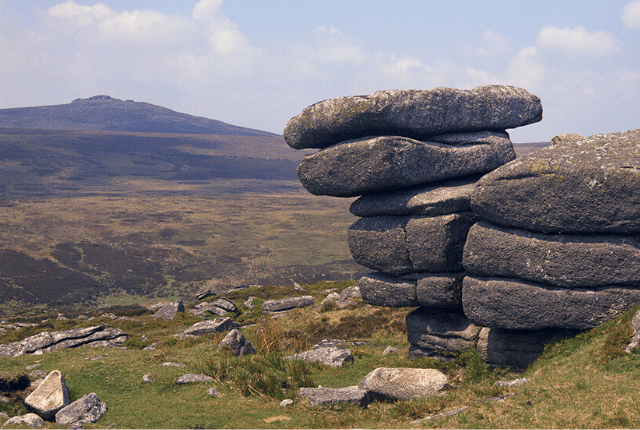Deposition is the laying down of sediment carried by wind, flowing water, the sea or ice. Sediment can be transported as pebbles, sand and mud, or as salts dissolved in water. Salts may later be deposited by organic activity (e.g. as sea shells) or by evaporation.
Wind
The term ‘saltation’ describes the process by which sand grains are picked up and transported by the wind. Sand grains bounce along the ground in the wind; when the wind stops or slows down, the sand is deposited and may build sand dunes.

An inland line of sand dunes marks a former shoreline near Prestatyn, North Wales. BGS © UKRI.
Water
Flowing water picks up and moves particles of soil and rock. When the water slows down, for example by reaching flatter land, it starts to drop the particles it is holding. It drops the largest particles first and the smaller ones as it slows down even further.
Alluvial fans are a feature typically created when sediment carried by a mountain stream is deposited due to a rapid change in slope from a high to a low gradient. When the slope angle is high, the stream flows with a high velocity and is able to transport larger pieces of sediment such as pebbles and sand. When the slope angle is lower the stream loses the energy it needs to carry these larger pieces of sediment and they are deposited. The deposited materials eventually spread out, creating an alluvial fan.
Water may also carry dissolved material – mostly ions that have minerals it has dissolved from solid rock. These ions may be deposited en route to the sea or may reach the ocean and contribute to its saltiness.
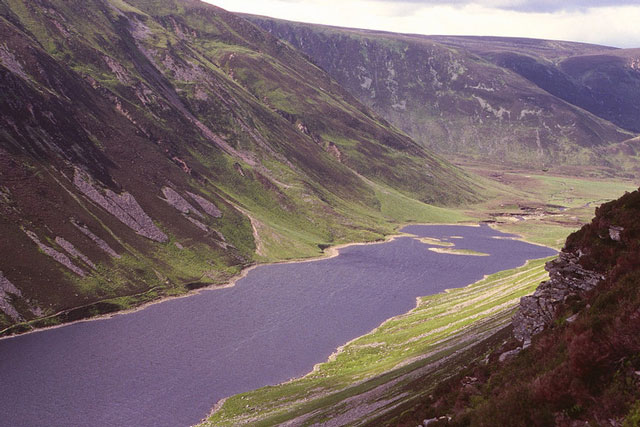
Alluvial fans around Loch an Duin, Scotland. BGS © UKRI.
Sea
In coastal environments, sediments are deposited along or near a coastline by low-energy waves that can no longer support their sediment load. Material carried by the sea is washed up by the water and begins to build up along the coastline, creating beaches and other coastal features such as spits and shoals. Beaches change and move by the combined action of tides, waves and currents and can lose or gain sand from season to season. Soetimes the sand disappears completely, leaving behind heavier cobbles.
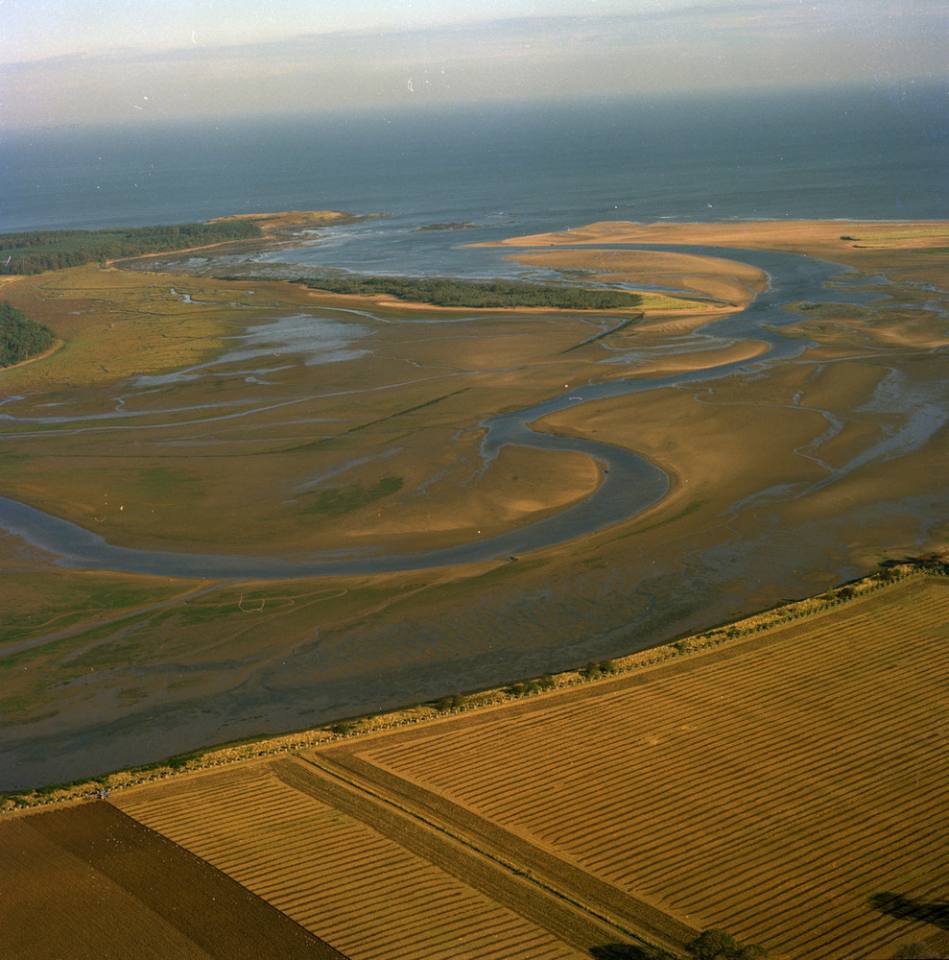
Sedimentation creating sand and shingle spits at the mouth of the River Tyne, East Lothian. BGS © UKRI.
Ice
Glaciers are not static objects; they move, albeit very slowly, flowing under their own weight, and they grow and shrink depending on the climatic conditions. As they move, they carve the landscape below them, picking up sediments and rocks of all sizes. In fact, glaciers can carry the largest of sediments — boulders, which can sometimes reach enormous sizes — for very long distances. When the glaciers melt and retreat, they leave them behind as what are known as ‘glacial erratic boulders’, made of rock that has no relation with the local geology where they have come to rest.
The typical deposit of a glacier is known as ’till’, which is an mixture of all the debris that the glacier was carrying at that moment, such as clay, sand, pebbles and boulders. The typical glacial sedimentary features known as moraines are composed of tills.
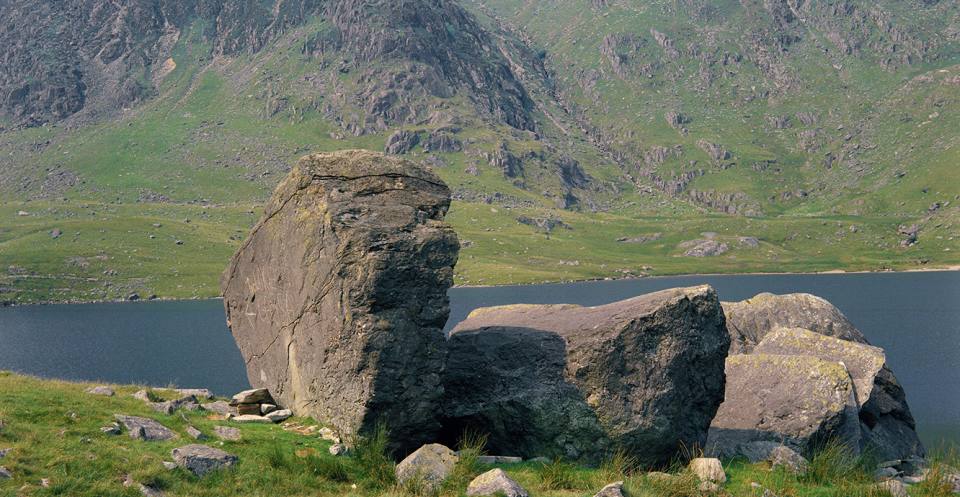
Glacial erratic boulders perched at the side of Llyn Idwal, Snowdonia. BGS © UKRI.
You may also be interested in

Discovering Geology
Discovering Geology introduces a range of geoscience topics to school-age students and learners of all ages.
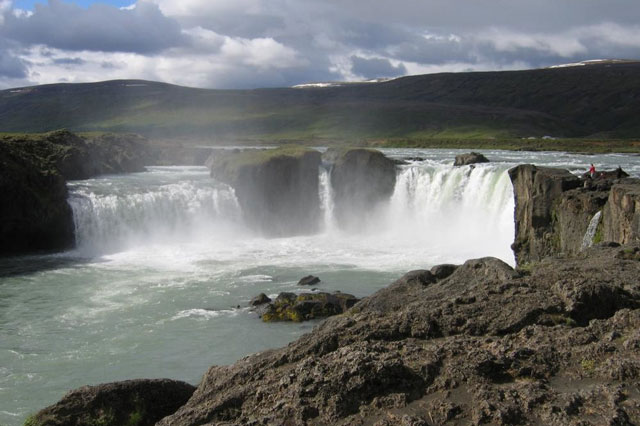
Geological processes
Planet Earth is dynamic with a surface that is always changing. Find out about the processes that cause these changes.
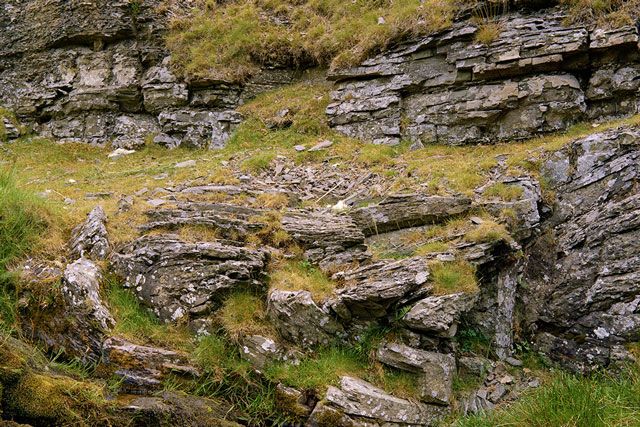
Weathering
Weathering is the wearing down or breaking of rocks while they are in place.




